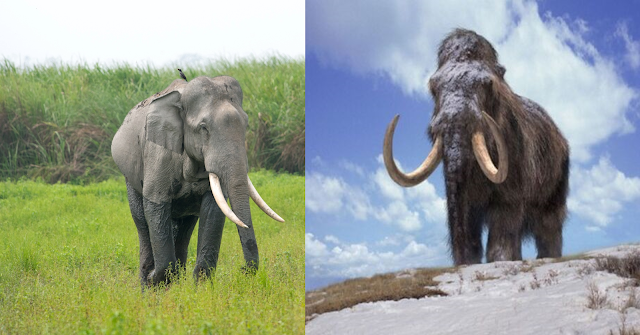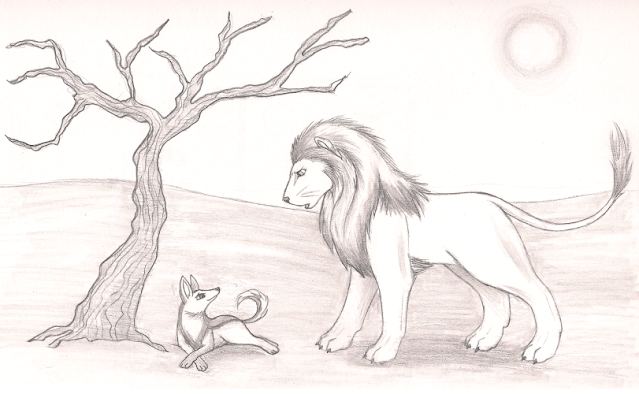From mammoth to elephant
The woolly mammoth is perhaps one of the most iconic animals
of the ice age, mainly due to the fact that he is the ancestor of an animal
that is popular today, the elephant. It was debated for a while as to which
species of elephant the mammoth is closely related to, the Asian elephant or
the African elephant. The former species was chosen by science because mammoths
were smaller than African elephants and about the same size as Asian elephants.
Their trunk patterns are also similar
It happens to be co-incidence that the comparison involved
in comparing the mammoth to the elephant does not revolve around that
comparison alone but also to the world of the respective animals of that time.
I have noticed that the world of the woolly mammoth bears some similarity to
the world of the Asian elephant in Kaziranga national park in Assam, Northeast
India and this analogy examines the similarities as well as differences between
the world of the Asian elephant and the world of the now-extinct mammoth
- Much like elephants, mammoths were social
animals and their herds comprised mainly of females and their young with males
joining to mate. Also like the Asian elephant, the mammoth had one finger at
the end of the trunk for curling, a contradiction to the African elephant which
has two fingers at the end of the trunk for gripping
-
Although Asian elephants in Kaziranga are
tropical animals, mammoths lived in a cool environment despite evolving from
early elephants in Africa. While they sometimes migrated to other areas of
their home much like elephants do today, mammoths would migrate to either find
fresher food or escape danger while elephants mainly migrate for the latter
reason
-
The mammoth was a more popular animal than the
woolly rhinoceros although today that is completely reversed in Kaziranga; today
the Indian rhinoceros is more popular an animal than the Asian elephant
-
Much as deer and buffalo share the home of the
Asian elephant in Kaziranga, the home of the mammoth was shared by both deer
and bison
-
Much as tigers are a threat to young elephants
in Kaziranga unless protected by their mother or herd, lions were a threat to
young mammoths without the protection of their mothers and herds. Even today in
Africa, lions may still attack young, sick or weak elephants who are
unprotected. While wolves may have also posed a threat to young mammoths, there
are no members of the dog family present in Kaziranga except for the
neighbouring Manas national park which flows into Kaziranga. Snakes such as the
cobra are also a threat to elephants although evidently snakes could not have
survived or lived in a climate that the mammoth had to survive in
-
Much like today’s elephants, male mammoths lived
apart from female herds, either alone or in male groups, only joining female
groups to mate. Like modern elephants, mammoths would attempt to mate with as
many females as possible
-
Kaziranga has both a warm and cool temperature
so it is not surprising that elephants would have to roll in mud or water to
cool down given that they have no sweat glands. In the case of mammoths, they
never cooled off in water given the freezing temperature but when it was
summer, they did coat themselves in mud
-
Contrary to popular belief, elephant herds are
not led by a bull elephant but by an elderly cow elephant known as the
matriarch. When she dies, it is normally one of her sisters that leads the
herd. The same was true of the mammoth
-
Mammoths and many animals who shared their home
faced a lot of persecution from early man for food and skin and it is thought
that these actions by our ancestors led to the extinction of many ice age
animals such as the mammoth although recent research reveals it was climate
change that wiped out the mammoth. Today, in Kaziranga, elephants, much like
rhinos, buffaloes and tigers are facing extinction at the hands of man. It is
important to ensure that the wildlife of Kaziranga is protected for future
generations so that it does not undergo what the world of the mammoth went
through




Comments
Post a Comment